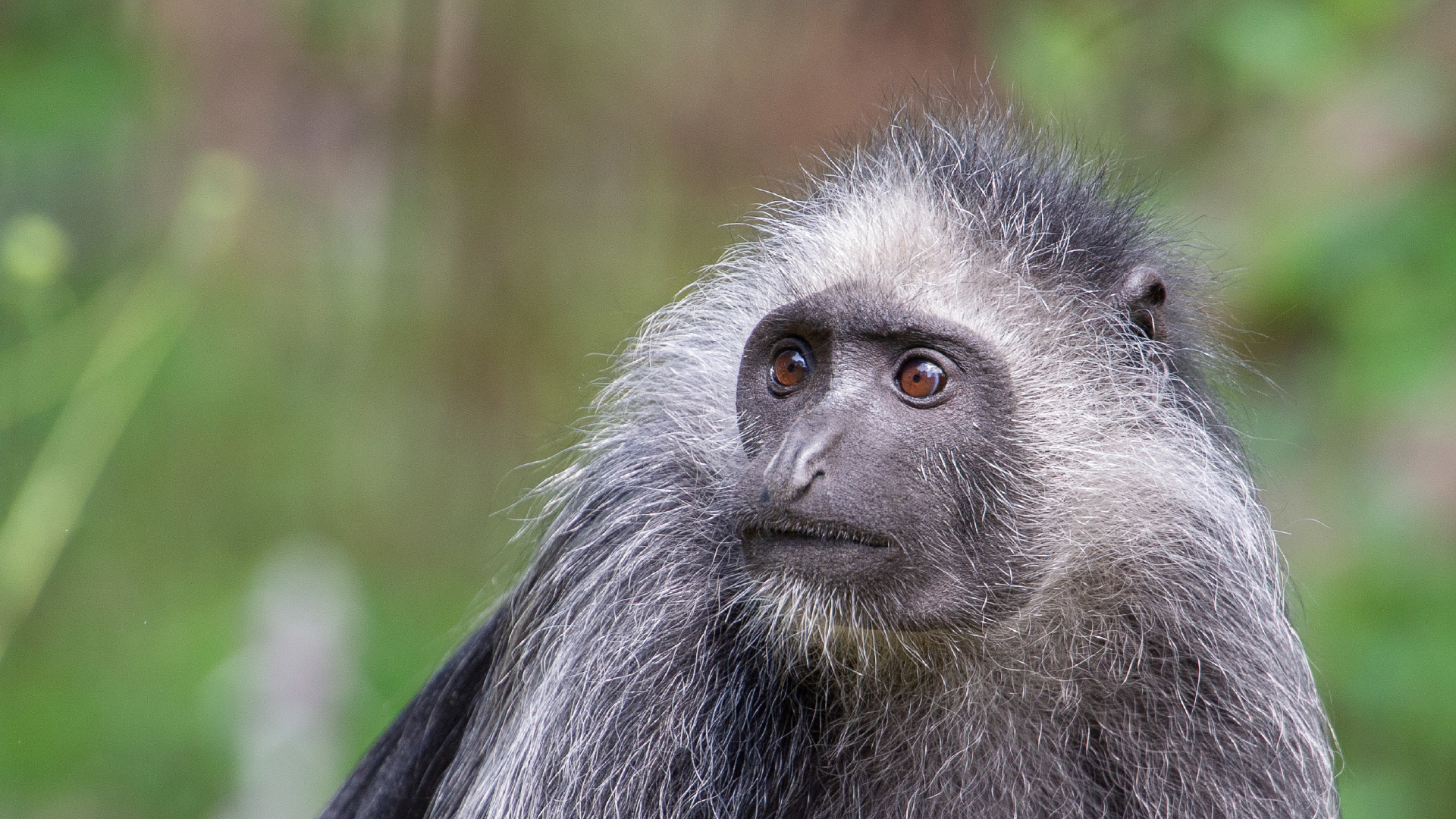King Colobus (West-African)
Colobus polykomos
Habitat
Lowland rainforests, riparian forests and swamp forests
Food
Leaves, seeds, fruits and flowers
Weight
± 7 - 9 kg
Age
20 to 25 years
IUCN Status
Bedreigd
Appearance
King colobus monkeys have a black body with white hair around their face and prominent, long patches of silvery-white hair along their shoulders. They also have a long, white tail. They do not have a thumb on their hands, but a small stump. They do not need a thumb when swinging in the trees.
Habitat
In the wild, king colobus monkeys live in lowland rainforests, riparian forests and swamp forests along the coast of West Africa, from Guinea-Bissau to the Ivory Coast. They spend most of their time high up in the trees.
Lifestyle
In the wild, king colobus monkeys live in groups of 9 to 19 individuals with 1-3 adult males and 4-6 adult females. There is a clear hierarchy among the males and little interaction among them. The females maintain close relationships with each other and often groom each other. The females also contribute to the care of the infants in the group. The infants are very striking because they are completely white at birth; therefore, they attract a lot of attention from other females. The infants will often be taken by these sitters or ‘aunts’ (‘infant-handlers’) and held for long periods of time. As with most primates, the males leave their natal group, but there is also evidence that the females sometimes leave their natal group.
Behaviour
King colobus monkeys have a rather lethargic lifestyle. Their diet consists mainly of leaves and about two to three kilograms of leaves are eaten per day. Due to this diet, they have to rest for long periods in order to digest all the leaves consumed. More than half of the time they are resting or sunbathing to save energy. The latter is especially important in periods of food scarcity.

Reproduction
Females give birth to one infant after a gestation period of about 5.5 months. Births in king colobus monkeys occur in the dry season between December and February. Usually the females give birth every two years. Infants are entirely white at birth and gradually darken as they age. All adult females in the group care for the young. Female king colobus monkeys have no obvious genital swelling. The females are sexually mature at the age of two to five years and have their first young between three and seven years old.
Situation in the wild
King colobus monkeys depend on primary, high quality forest to thrive. They are threatened in the wild because their habitat is disappearing and forests are declining in quality. Despite living in protected areas, they are also hunted for their meat and fur.

At Apenheul
You can observe the king colobus monkeys in the new free-range area of Apenheul! This is the first time in Apenheul's history that colobus monkeys can be seen. This group consists of four males as there is an abundance of males in the European population management program. They share their habitat with the Northern talapoins and the African spurred tortoises. This species of colobus monkey is only kept in eight other European zoos with a total of about 40 individuals.
Population management programme
Apenheul is part of the European endangered species programme (EEP) for king colobus monkeys. By working with other international zoos, we maintain a genetically healthy and demographically stable population of this species in zoos that serves as a reserve population.
Fun Facts
- King colobus monkeys are great climbers and jumpers! Despite not having prehensile tails, like monkey species from South and Central America, their tails provide counterweight which is very useful when climbing and foraging high in the treetops.
- The name ‘colobus’ is derived from ‘ekolobóse’– a Greek word that literally means ‘he cut short’ or ‘mutilated’. Species of this genus have this name because of the reduced thumb which is simply a small, rounded stump. The absence of a thumb allows these monkeys to move quickly between the trees.
Want to see the King Colobus monkeys at Apenheul?
Get your tickets now and roam freely among the primates!

Welcome to Apenheul
Open for business events
Park open from Friday 20 March, 10.00 hour